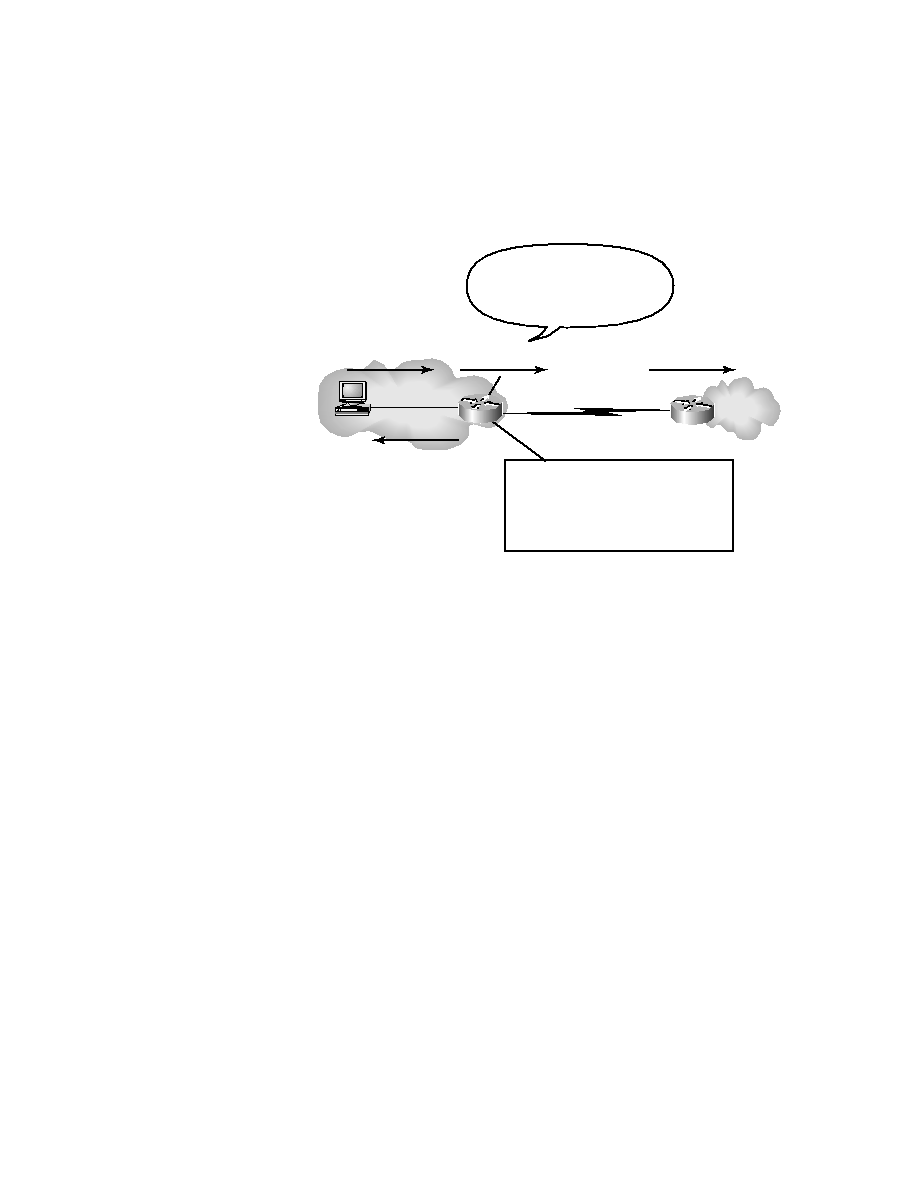
Route Maps
383
F I G U R E 1 0 . 1 1
Redistributing static default routes
Route Maps
E
arlier in the chapter, we saw how route maps can be used to fine-tune
route redistribution. Other examples of policy-based routing benefits
include
Load sharing, based on the type of traffic
Sending low-priority or non-interactive traffic (e.g., routine batch pro-
cesses) over slower, low-cost links
Traffic prioritization, based on the type of traffic
Route maps have two primary components: a match clause and a set
clause. The function of the match clause is to specify the traffic that is to be
policy routed. The traffic may be specified by using an access list (either stan-
dard or extended), packet length, metric value, route type, or tag value. The
route map processes the match statements sequentially until a match is
found. As with access lists, there is an implicit deny statement at the end of
the match list.
Internet
router rip
network 1.0.0.0
redistribute static
!
ip route 0.0.0.0 0.0.0.0 5.5.5.5
I don't have an entry in my
routing table for network 12.0.0.0.
So, I'll send the packet to my
default route, which points to 5.5.5.5.
1.1.1.1
5.5.5.4
5.5.5.5
Company A
Unix Host
Data
(Destination 12.1.2.3)
Data
(Destination 12.1.2.3)
Data
(Destination 12.1.2.3)
RIP Advertisement
Default Gateway = 1.1.1.1
Copyright ©2001 SYBEX , Inc., Alameda, CA
www.sybex.com
